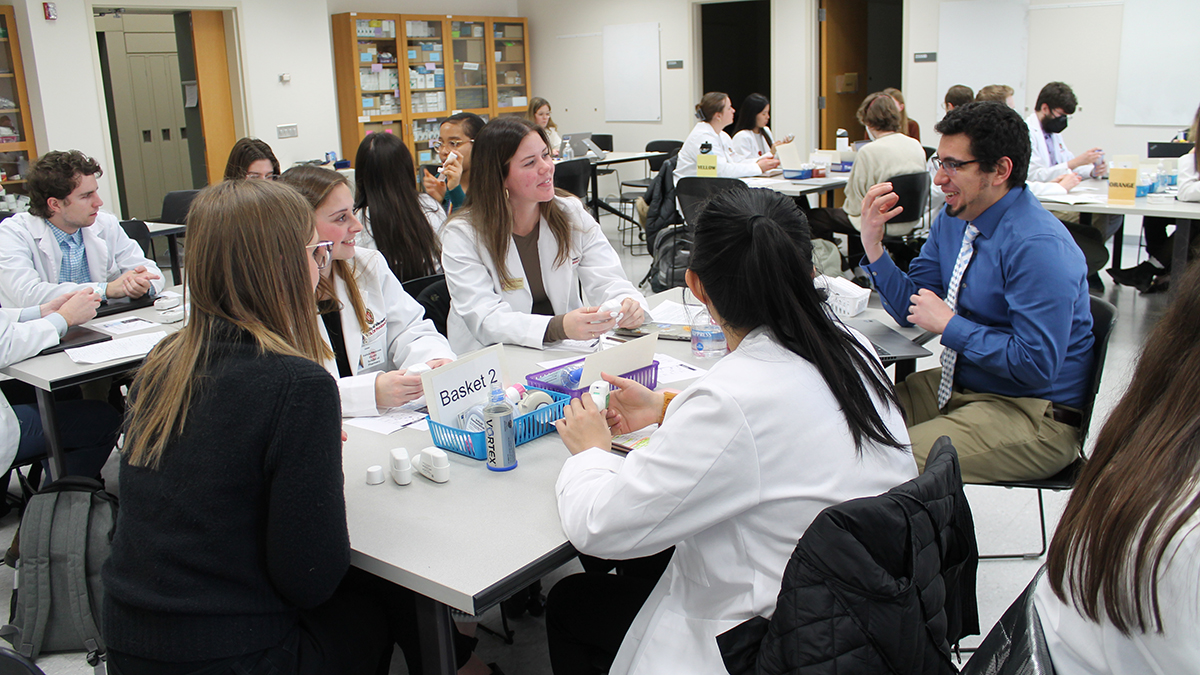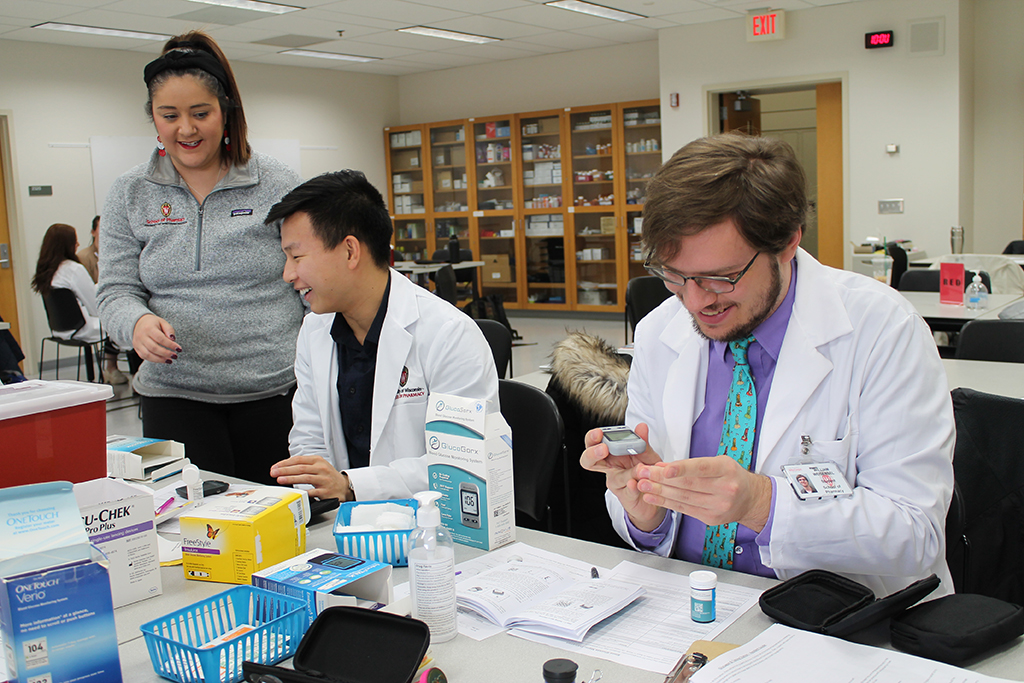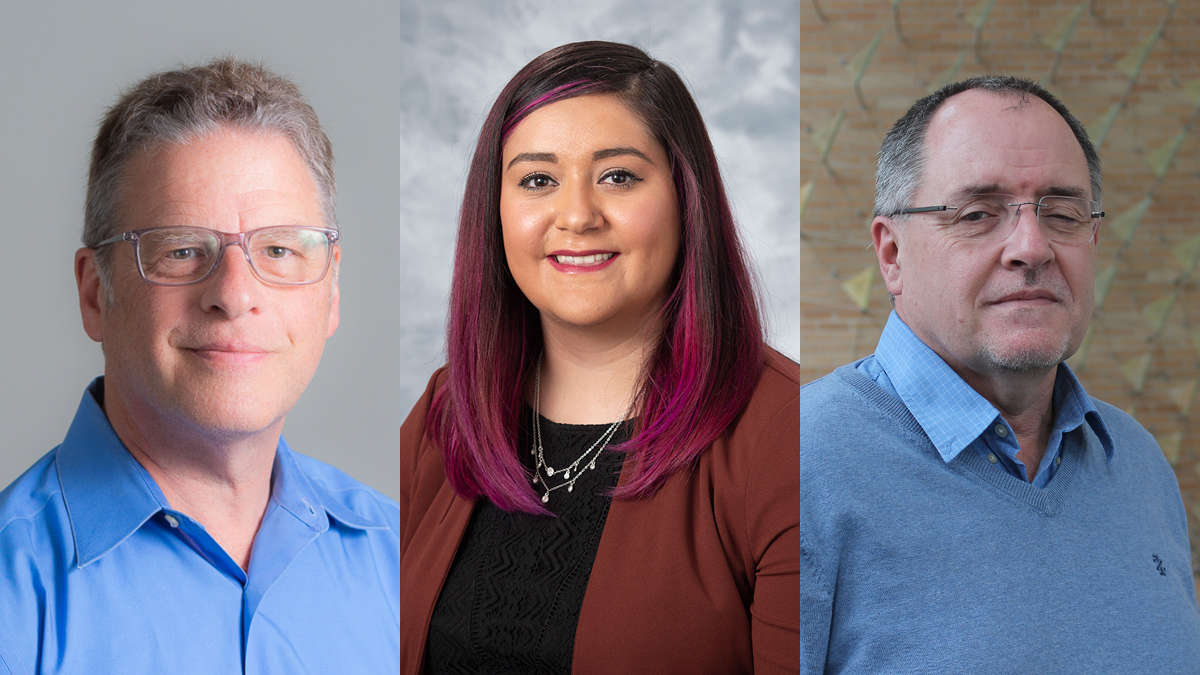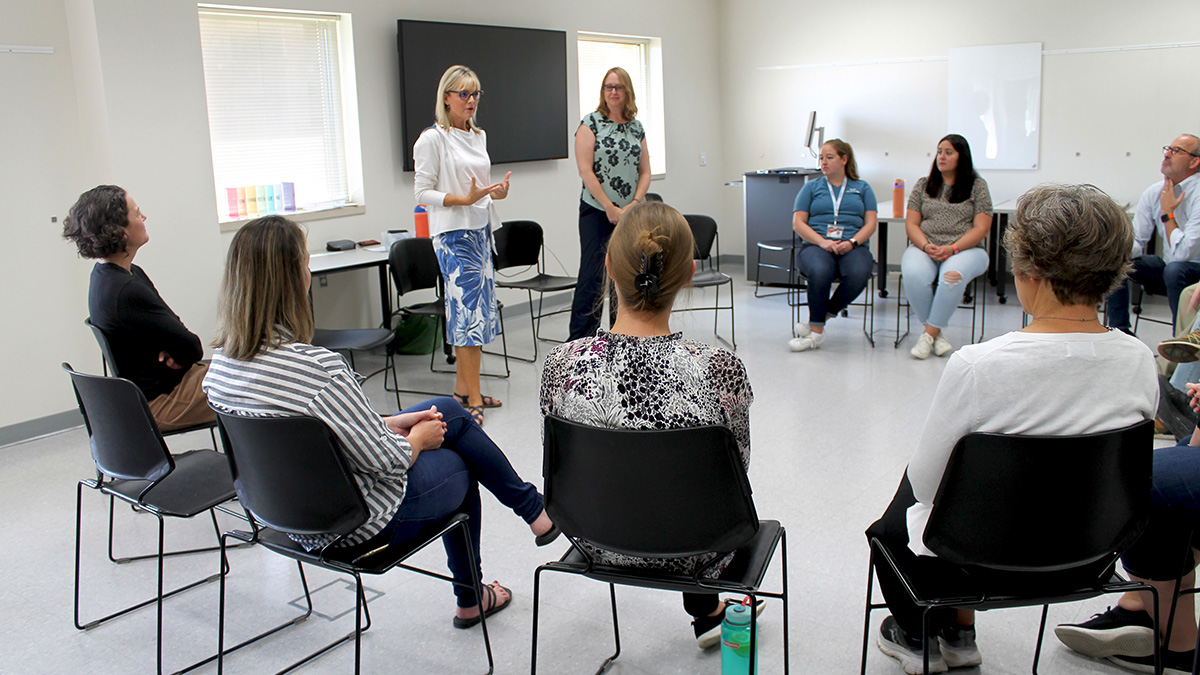
With a new integrated curriculum, the School of Pharmacy is helping students connect the science of how drugs work with how they’re used in real-world practice
By Archer Parquette
Pharmacists are uniquely positioned at the intersection of science and patient care, translating molecular mechanisms into effective treatment regimens. That’s why the University of Wisconsin–Madison School of Pharmacy is integrating pharmacology and pharmacotherapy into a cohesive course series that better aligns practice and science.
“A challenge we’ve seen over the years is that things get off sync as both practice and scientific understanding have evolved,” says Professor of Pharmacy Barry Gidal, who helped orchestrate the integration. “Traditionally, one course might talk about using a certain therapy, but the students wouldn’t learn the basic science about that drug until possibly weeks later in a different course. We decided we needed to do something different.”
The goal was to create a single track that would eliminate redundancies and ensure students were learning both how drugs work and how to use them in a clinical setting.
“We wanted to create a series of integrated courses that would seamlessly go from teaching students how drugs work at the molecular, physiological level to how they are actually used in treating patients.”
–Mel de Villiers
“We wanted to create a series of integrated courses that would seamlessly go from teaching students how drugs work at the molecular, physiological level to how they are actually used in treating patients,” says Professor Mel de Villiers, vice dean and associate dean for academic affairs. For example, a student will learn about the science behind diabetes and the medications used to treat it, alongside how those medications are prescribed and monitored in a clinical setting.
Now, after a year of preparation, discussion with faculty, feedback from students, and extensive course planning, the new integrated courses are officially being rolled out in the 2025–26 academic year.
Preparing for change
To ensure a well-rounded approach to the integration, de Villiers and Gidal enlisted the entire faculty in the effort.
“We wanted to work together to create what is best for the students,” says de Villers.
Associate Professor of Pharmacy Marina Maes and Associate Professor of Pharmaceutical Sciences Lara Collier, were involved in the process from early on, and have since taken the lead in moving the process forward, bringing the faculty perspective from both the practice and pharmacology lenses.

“After our initial meeting about this, faculty from both divisions were supportive of pursuing this change,” Maes says. “We were all having these challenges, and we saw that this was an opportunity.”
What was once three pharmacology courses and four pharmacotherapy courses are now nine integrated science and therapeutics courses, offering more opportunities for applied learning through patient cases, helping students connect foundational concepts such as mechanisms of action, pharmacokinetics, and safety profiles with the real-world decision-making involved in optimizing patient care.
Starting in the spring semester of PharmD students’ first year, the courses will cover topics organized by organ system, such as pulmonary, brain and mind, and cardiovascular units — merging the pharmacological and pharmacotherapy aspects into one.
“The driving force here is really the students,” says Collier. “Our biggest goal is to improve the student experience in terms of the way material is presented to help them learn, retain, and apply it.”
The new integrated material has also been re-ordered to best prepare students for their time spent learning in clinical settings. For example, classwork on infectious diseases has been moved up so that students will have that knowledge before they complete their concentrated two-week hospital rotation the summer before their third year.
“The driving force here is really the students,” says Collier. “Our biggest goal is to improve the student experience in terms of the way material is presented to help them learn, retain, and apply it.”
–Lara Collier
“One of our pharmacology faculty who retired, Professor Warren Heideman, coined the term scientific clinician,” says Gidal. “That’s what we want our students to be — to understand the scientific underpinnings for why we make clinical decisions with medicine. If they understand that process, then they can learn anything they need to in the future.”
Continual improvement
Gidal and de Villiers know there will be “bumps in the road” as the new integration is rolled out.
“Any change like this will be bumpy,” says Gidal. “But ultimately, we’re improving the student experience. The students are a part of this process, and we want their feedback every step of the way.”
“One of our goals is providing full transparency,” says Maes. “We want everyone — faculty, students, preceptors, alum — to know what we’re doing, and why we’re doing it.”

While the first courses will be rolled out in the spring, the integration process doesn’t simply stop there.
“This is an evolutionary process,” says Gidal. “As we go, we’ll realize that there are more opportunities or aspects to consider. We’ll be building as we go. It’s always the goal to continuously evaluate and improve what we’re teaching and how we’re teaching it.”
The group also enlisted the help of the Center for Teaching, Learning, and Mentoring (CLTM), a campus division that supports instructors. Representatives from CTLM are working closely with faculty to incorporate evidence-based strategies for teaching and learning into the design of these courses.
“We’ll be learning new things even from the first course and applying those to the next,” says de Villiers. “It will be continuous quality improvement.”
In the years ahead, Gidal and De Villiers hope to fine-tune the course process further.
“My desired outcome is for our students to graduate and become scientific clinicians,” Gidal says. “Not only do they remember the basic science, but they don’t silo it. They know how to incorporate it into their practice and their decision-making process. That will really make a difference.”

